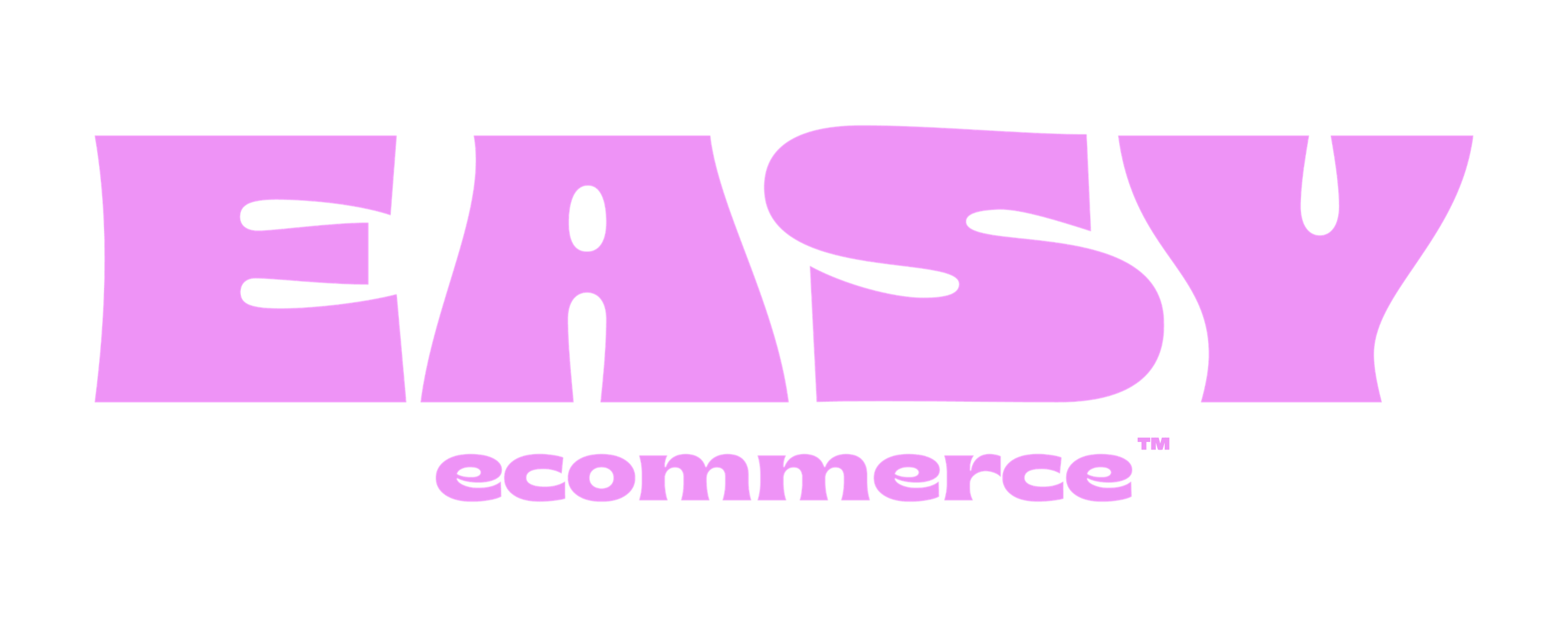

You've probably heard a lot about Conversion Rate Optimization
Conversion Rate Optimization (CRO) for ecommerce is the process of systematically improving the percentage of website visitors who make a purchase.
Every fashion and DTC retailer wants to increase their conversion rate but what many leaders miss is that conversion rate is the result of actions that overcome the customer's objections along their user journey. So what do we track and how? Read on.
Conversion rate is the result of actions that overcome the customer's objections along their user journey.
Focusing solely on conversion rate as a metric misses the forrest for the trees, and it's the individual trees that collectively create a forrest. Your ecommerce site similarly has hundreds of small actions, information, and emotions that must be created to collectively achieve conversion. It's these micro-moments that make up conversion rate optimization.
1. What conversion metrics are important?
It's easy to get buried in data and metrics. There are many things that can be tracked but there is one high level metric that tells a unique story of where the customer is on their journey. That metric is the Add To Cart rate.
The Add To Cart rate tells a story about what is happening with your site visitor.
Clicking an Add To Cart button is free. There is no cost to it. If you can't get a visitor to Add To Cart, your conversion rate will suffer.
If you want to increase your conversion through a conversion rate optimization project, then much of your efforts need to be focused on increasing the Add To Cart rate. This is a classic funnel model where attrition occurs at each narrowing level towards the bottom.
2. What are the metrics in the conversion funnel?
There are 3 metrics in conversion rate optimization:
Add To Cart
Reached Checkout
Conversion Rate
As a full service ecommerce agency, we work with many fashion apparel and DTC ecommerce brands. These collective insights enable us to benchmark and see patterns, one of which is the attrition rate through each level of the conversion rate funnel.
We see a 20-50% attrition rate through each step of the conversion funnel.
This means that if you wanted a 3% conversion rate, your reached checkout rate would need to be 6% and your Add To Cart rate 12%.
At a 50% attrition rate:
Add To Cart = 12%
Reached Checkout = 6%
Conversion Rate = 3%
Conversion rate optimization efforts are clearly needed throughout the funnel, but without a focus on the top, there's isn't much to pass down.
3. What conversion metrics should I focus on?
Now that you're seeing the impact of the Add To Cart rate, you can see its importance. Contributing to this is that the Add To Cart rate also plays an outsized role in relationship to the two other metrics. Why? Because there is actually very little work that can be done to affect the Reached Checkout and Conversion Rate. If you're on Shopify, these steps of the journey are standardized across millions of Shopify stores. And with Shopify's new (Aug 2023) launch of their one-page checkout, this part of conversion rate optimization is further standardized and streamlined.
Most consumers have already made up their mind at the Add To Cart button about whether they will convert or not.
Impact of each funnel stage to the conversion:
Add To Cart = 80%
Reached Checkout = 15%
Conversion = 5%
With this in mind, we can clearly see the outsized role the Add To Cart rate plays on conversion rate optimization and that the conversion rate itself is just a result.
4. Do I ignore the Reached Checkout and Conversion Rate?
I wouldn't. Conversion rate optimization is holistic but as you can see from their small impact, there's not much to do to Reached Checkout or Conversion beyond the following:
- Ensure that the information communicated in these steps is consistent with upstream information. This includes shipping rates, return policies, taxes/duties, bulk/heavy items, and any other “gotchas'' that customers hate seeing at checkout.
- Reduce errors, such as enabling auto address completion, testing all your shipping options by entering different addresses by state or region to see the results, customize your email/SMS sign up copy, and ensuring your checkout page branding is consistent.
5. Ok so how do I increase my Add To Cart rate?
This is the real question and this is the true focus of conversion rate optimization. Increasing your Add To Cart rate is the result of analyzing user behavior, identifying areas of friction or drop-off in the customer journey, and implementing changes to optimize the website's design, content, and functionality to overcome your visitors' purchase objections.
Here are 10 effective Add To Cart strategies to test for your conversion rate optimization project.
-
Optimize Product Pages
- High-Quality Images: Use high-resolution images that showcase your products from multiple angles and provide zoom functionality.
- Detailed Descriptions: Write clear and informative product descriptions that highlight the key features, benefits, and specifications.
- Pricing Transparency: Display the price prominently and ensure it matches the expectations set by your marketing efforts including your target customer.
-
Clear and Compelling CTAs
- Use persuasive and action-oriented call-to-action (CTA) buttons, such as "Add to Cart," "Buy Now," or “Shop Now.” While this is standard on Shopify, sometimes you'll need to modify this, say for subscriptions.
- Make sure CTAs are highly visible, ideally above the fold and near the product image. If you have a lengthy product description, we always put the CTA above it. Having a sticky CTA is even better.
-
Answer all the customers questions
- Shipping Cost: This must be clear well before the user thinks about clicking add to cart
- Return policy or Guarantee: This info can't be only in your footer. Summarize the most compelling part of our policy on product pages.
- Size/Fit/Technical Details: The user always has specific questions about your product. Generic “chart” style size guides are the laziest way to display this information. No one likes reading charts… not even you. Communicate this information with simplicity and confidence.
- Trust/Security: While most users under 50 are comfortable shopping online, if you are targeting users who are older or who haven't shopped much online, it can be worth adding Trust badges and secure payment logos. SSL is standard on Shopify and everyone generally expects and knows this.
-
Mobile Optimization
- You already know that 50-80% of your site traffic is mobile but how often do you work on site from a mobile view? Working in a desktop view is easy for the retailer but is not the experience of the customer. Design, build, and create in mobile view.
-
Product Recommendations
- Implement product recommendation algorithms AND curated recommendations to suggest related or complementary items to customers. This can increase the likelihood of adding more products to the cart.
-
Upsell/Cross sell
- Using upsell and.or cross sell discounts and bundles can encourage users to “get a deal” by adding more items to their cart. This can increase the emotion of the purchase beyond a full priced, single item purchase.
-
Offer Live Chat
- There's no better way to answer objections than in a real time chat. Offering live chat also gives you the ability to see common objections that visitors have, which can then be communicated up stream on your site.
-
Cart/Checkout Abandonment Recovery
- Implement an email retargeting strategy to remind users about their abandoned carts/checkouts and entice them to complete their purchases.
- Use personalized and compelling email content that details your brands best attributes such as your story, guarantee, limited runs, etc.
- Offer discounts to first time purchasers to get them into your CLV funnel.
-
Customer Reviews and Ratings
- Encourage customers to leave reviews and ratings for products they've purchased. Display these on product pages to influence purchasing decisions.
- Incentive photo and video reviews
- Show your negative reviews and respond to them with empathy (but don't get into debates).
-
Analytics and Monitoring
- Continuously monitor ATC rates, track user behavior, and use analytics tools to identify areas where users might be encountering friction or obstacles in the shopping process.
- Ecommerce and customers are constantly changing. Continuously stay tuned into your customers by using NPS scores, quarterly surveys, or 3rd party research to stay ahead of your competitors.
Remember that improving your Add To Cart rate is an ongoing process of conversion rate optimization. Regularly analyze data and gather user feedback to make informed decisions about website optimizations. By implementing these strategies and continually refining your approach, you can increase your ecommerce site's Add To Cart rate and, ultimately, your conversion rate and revenue.











